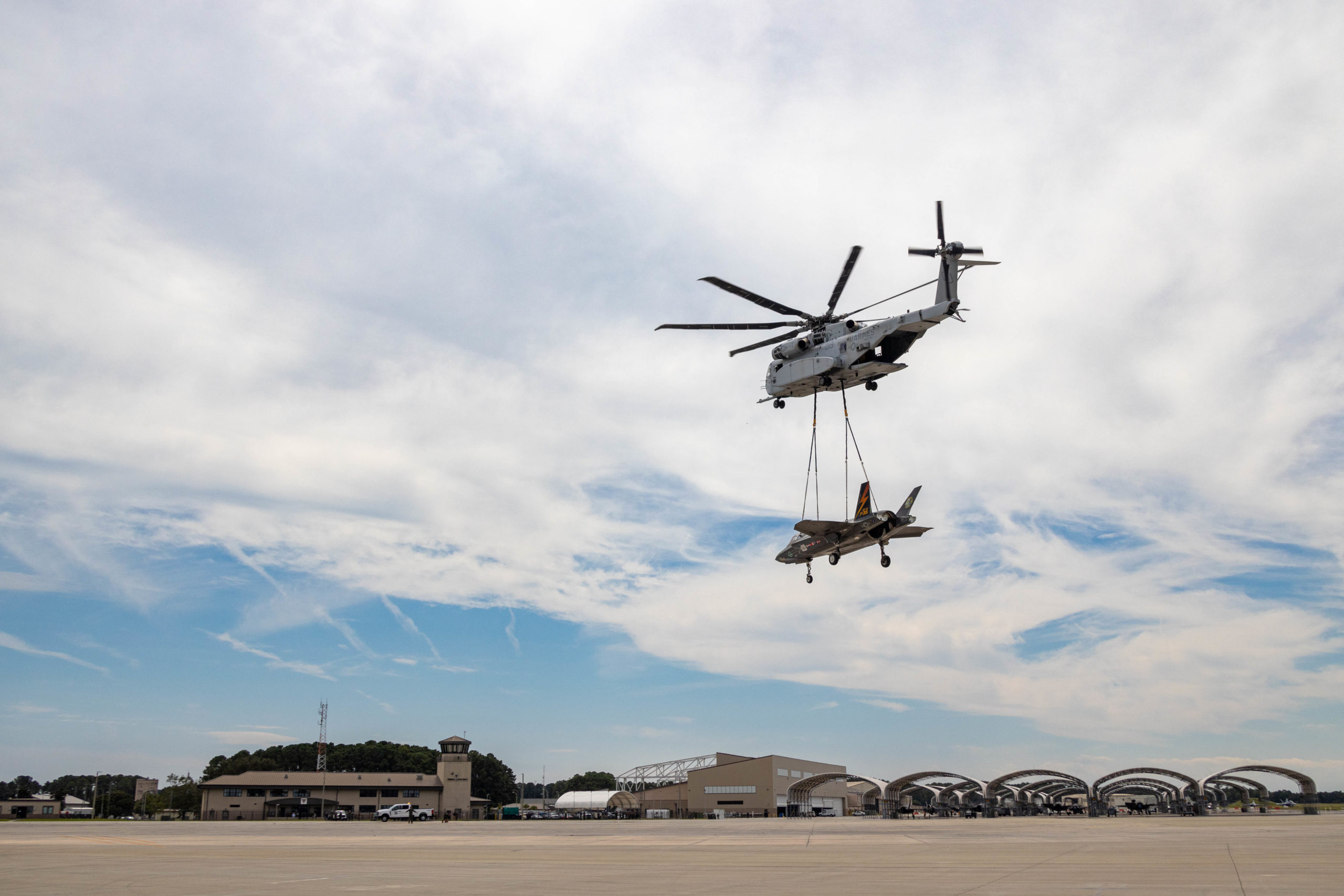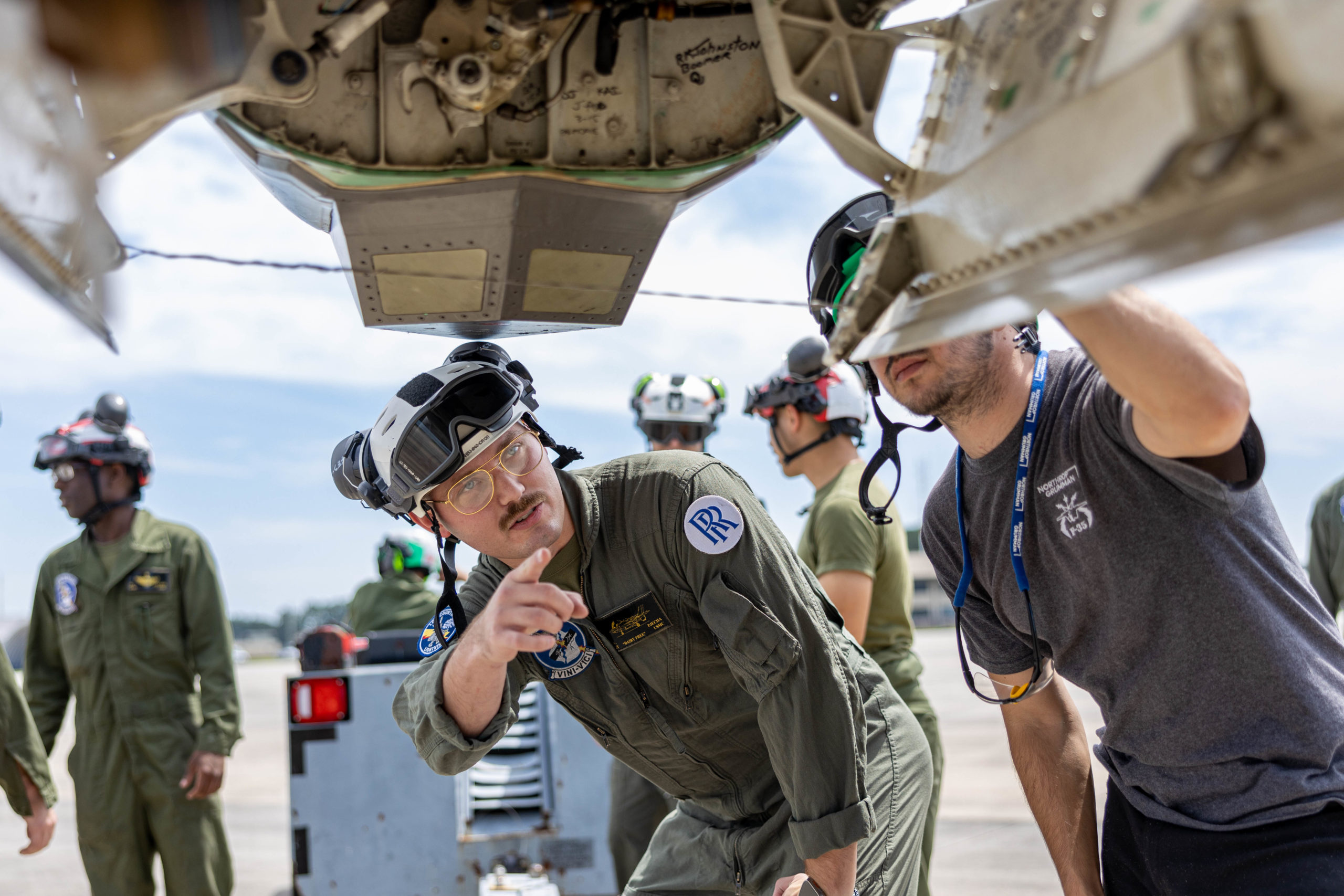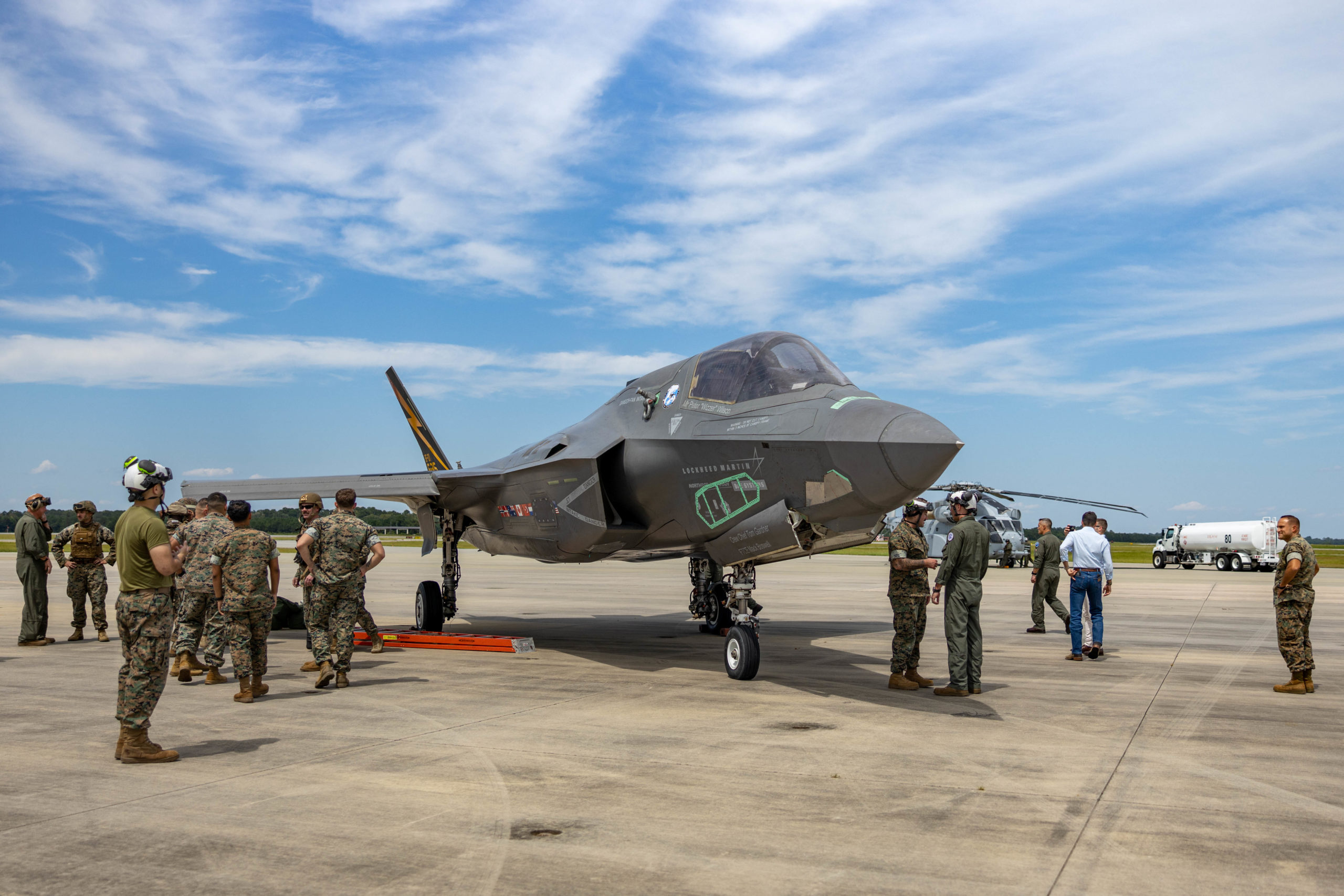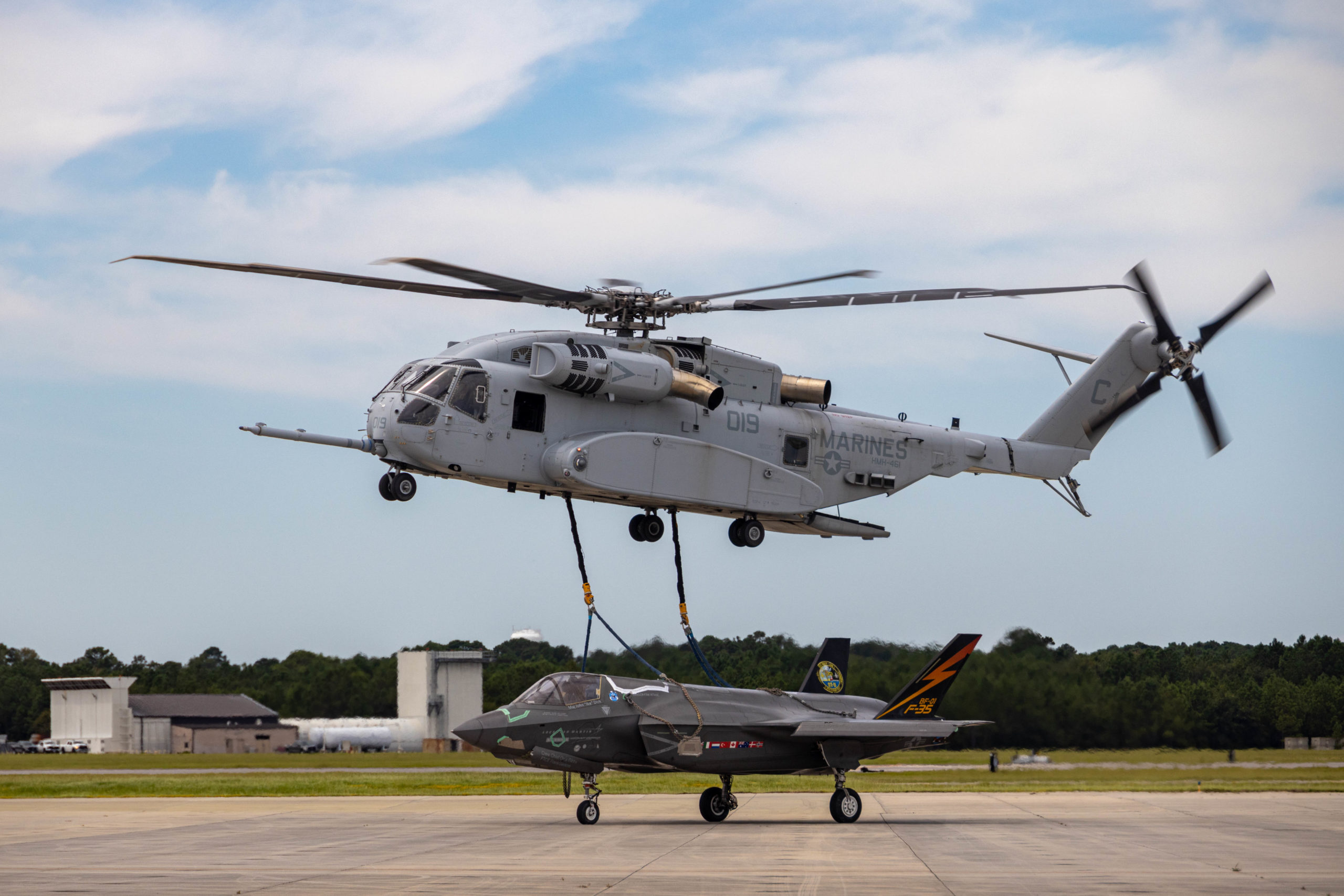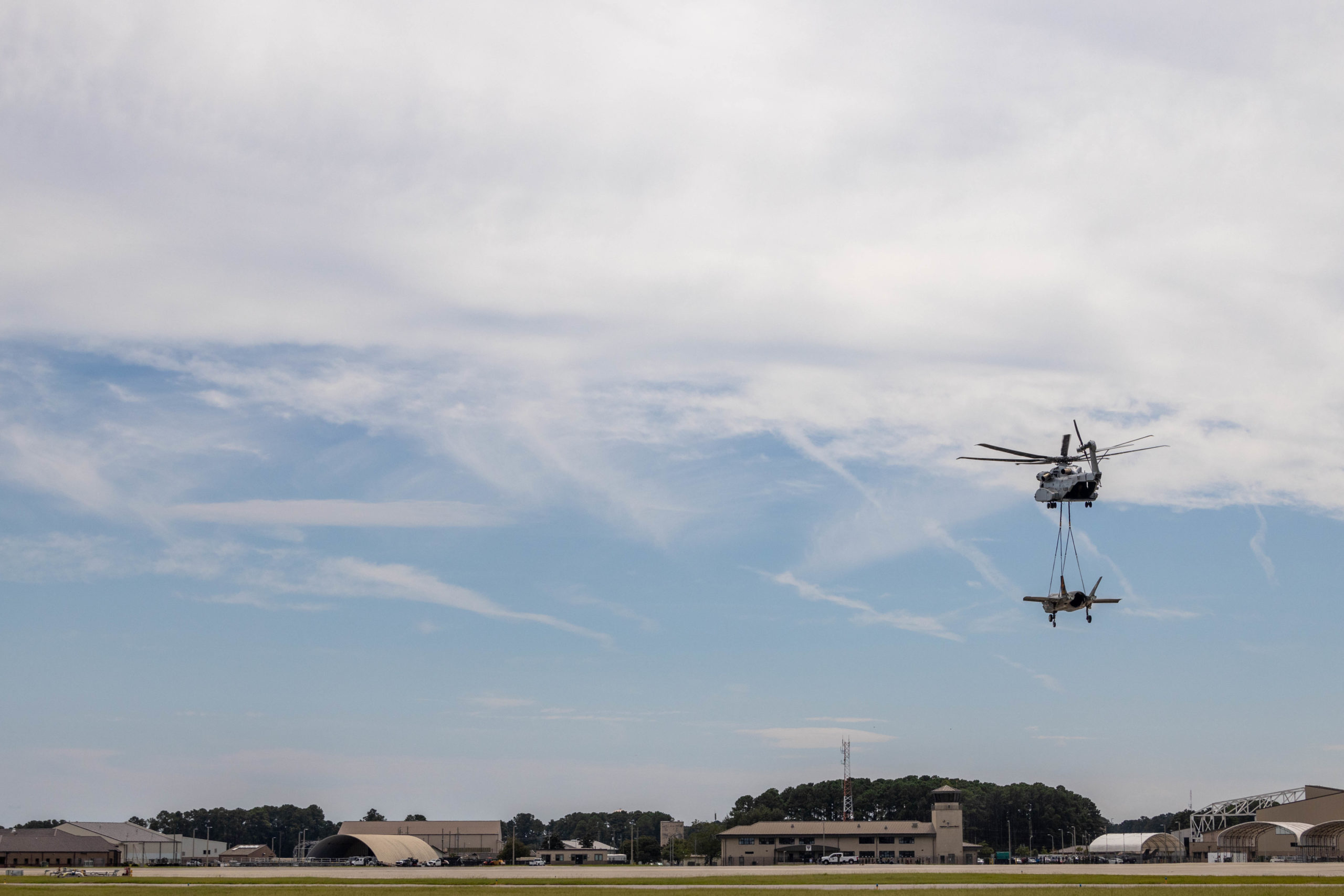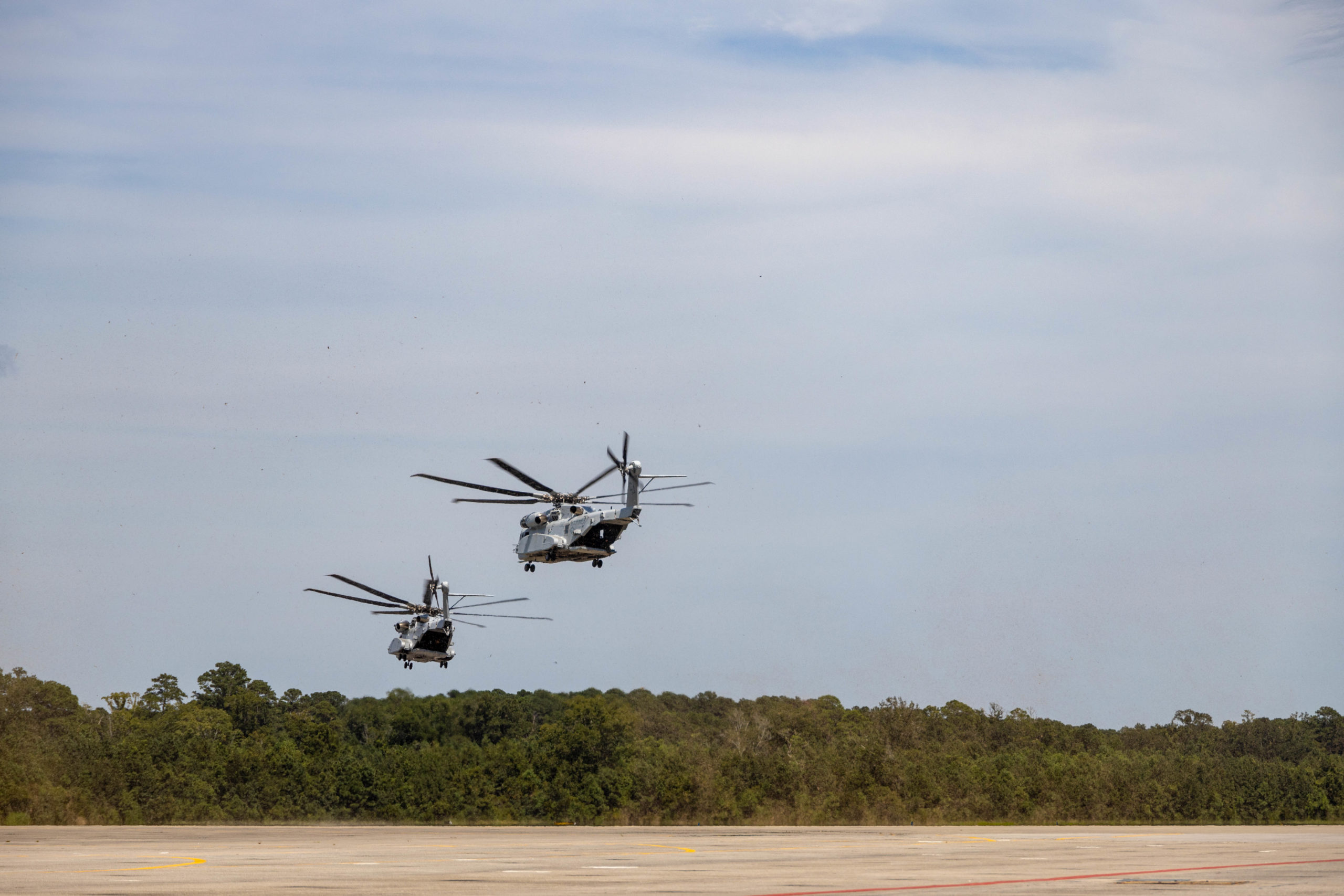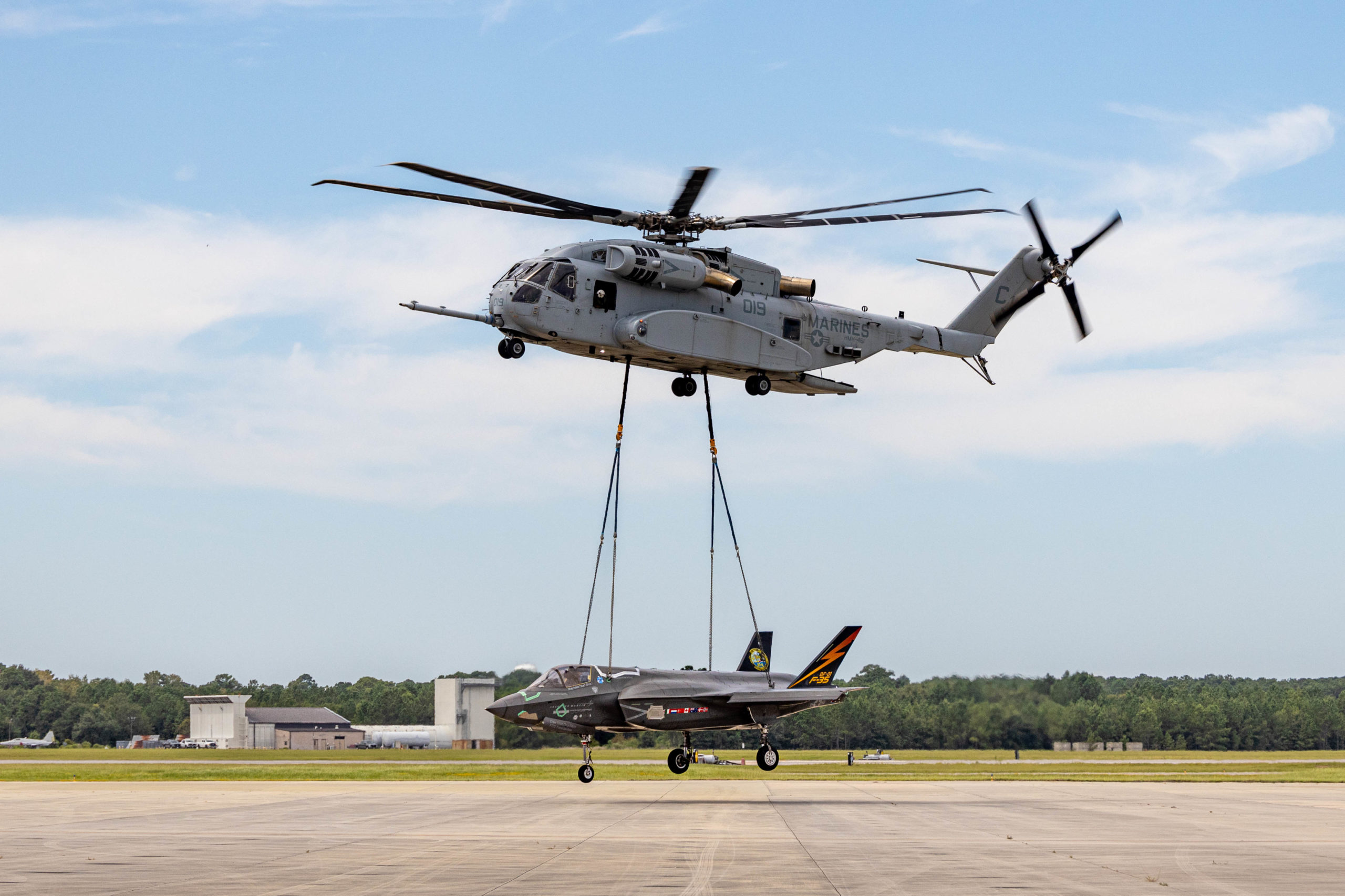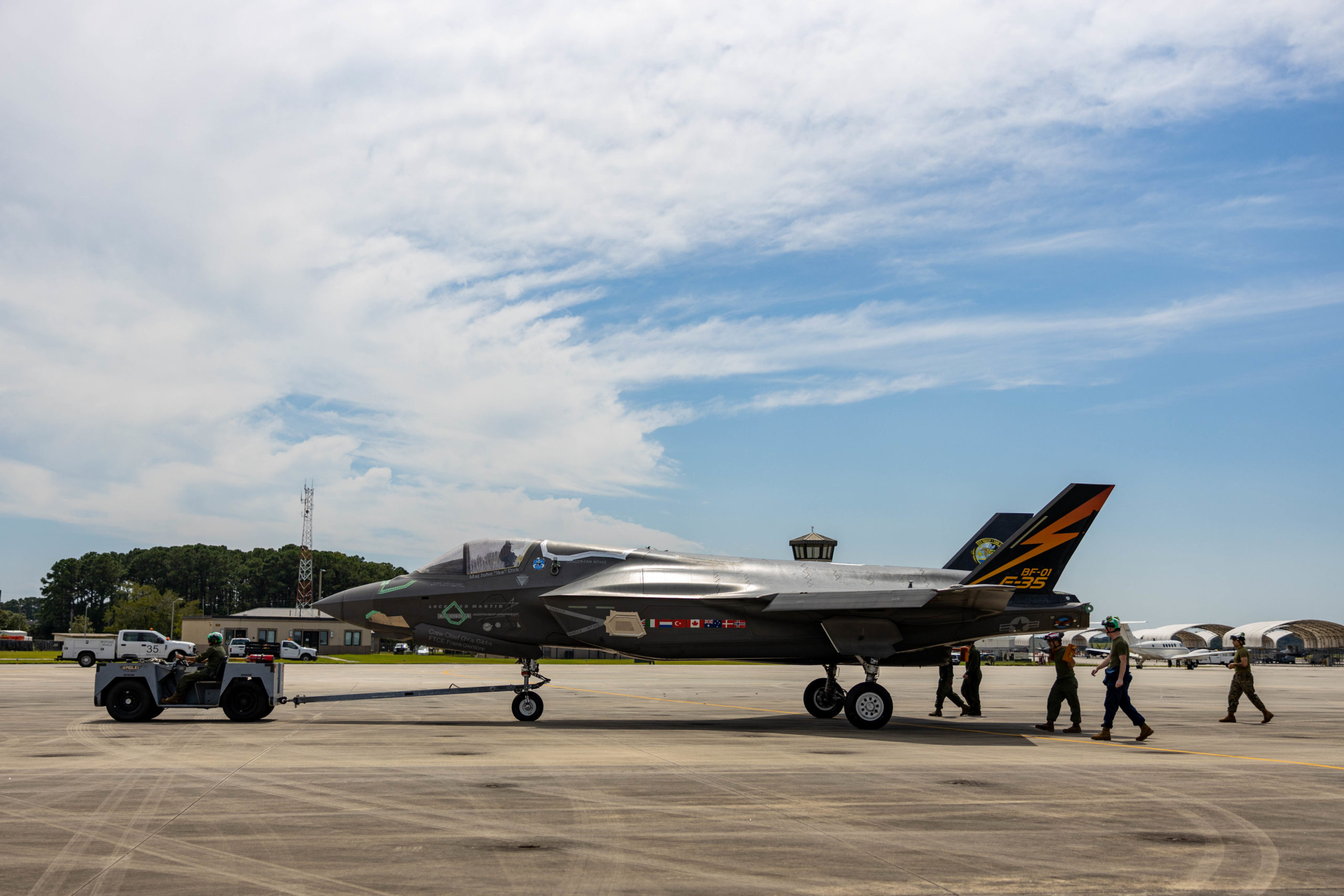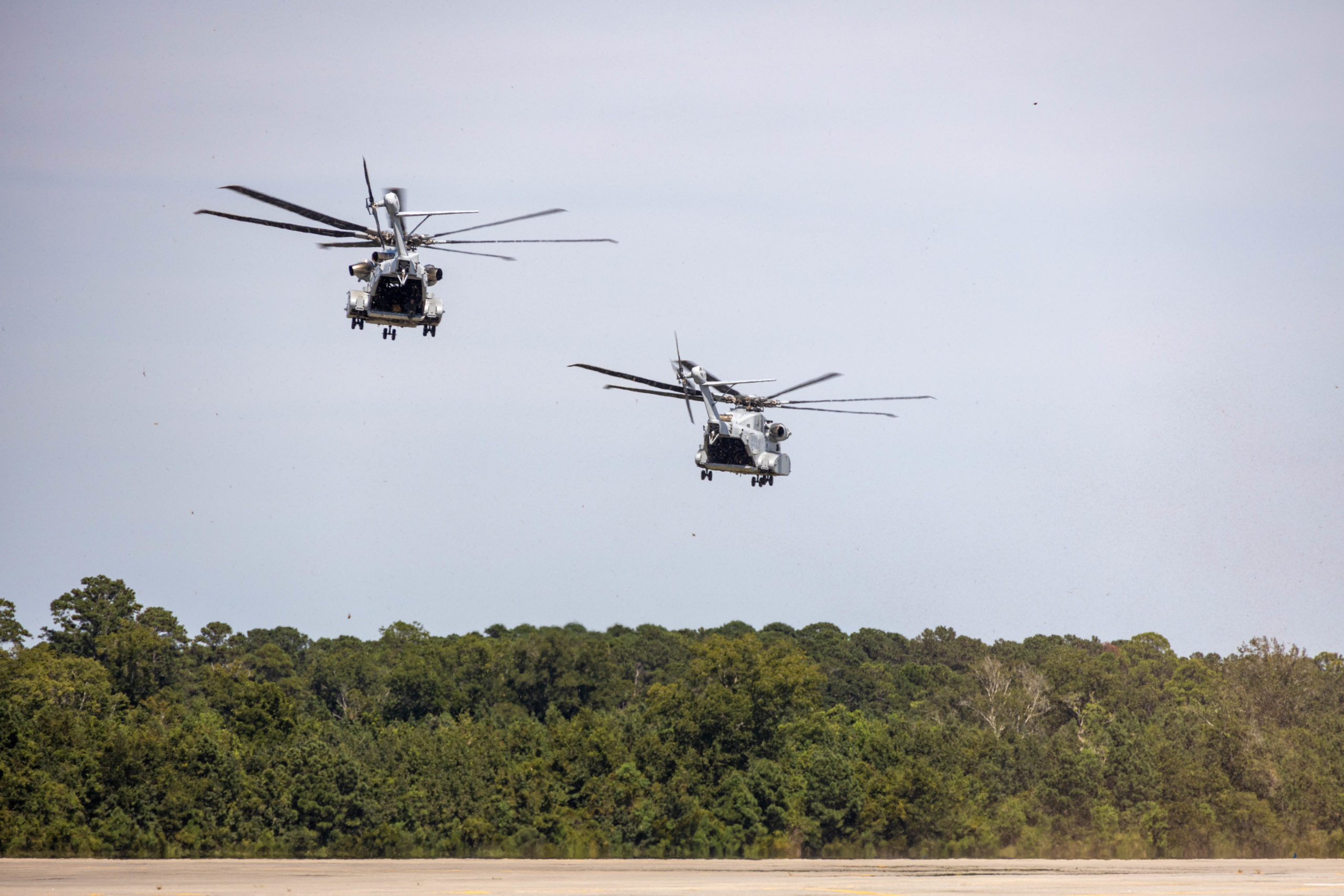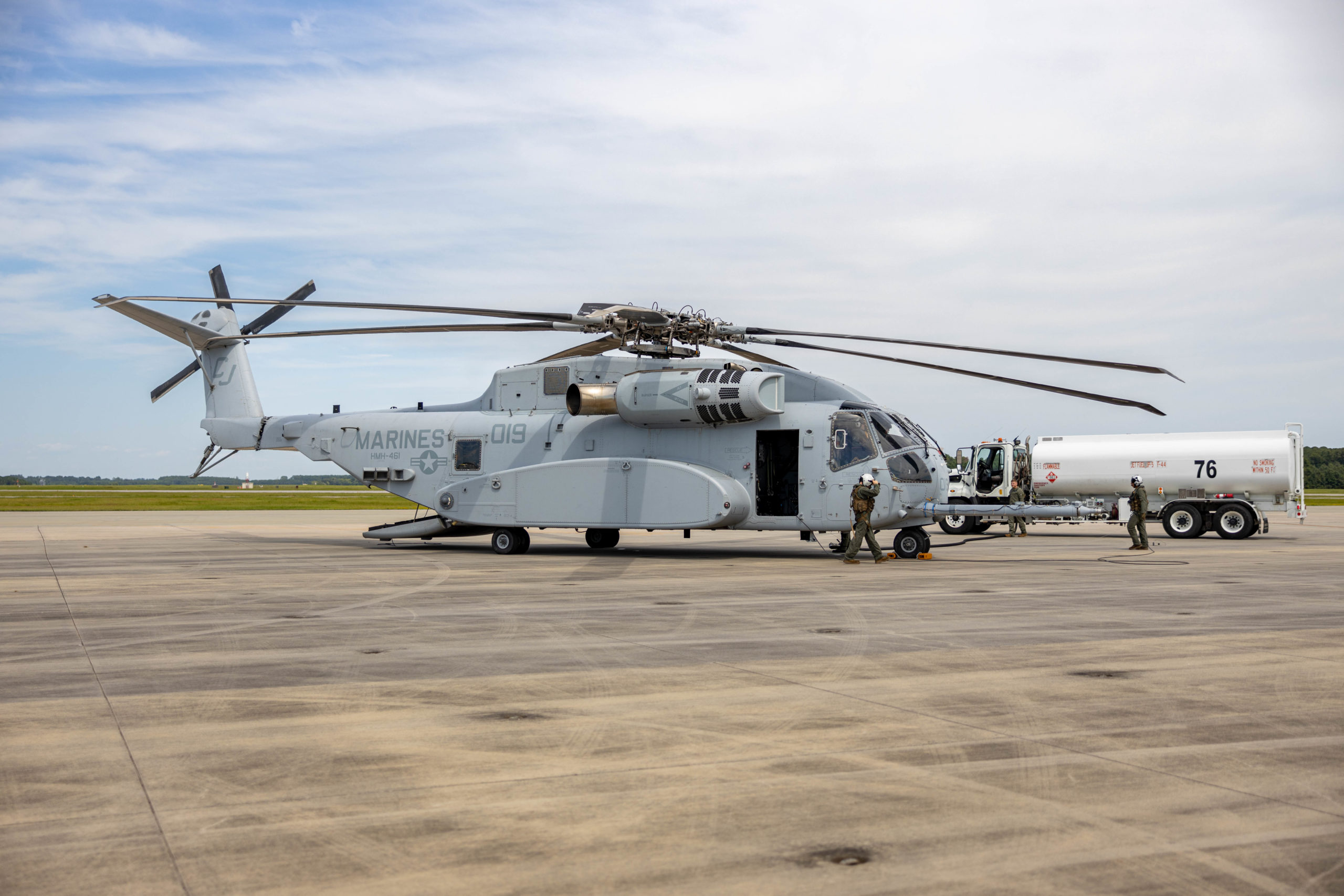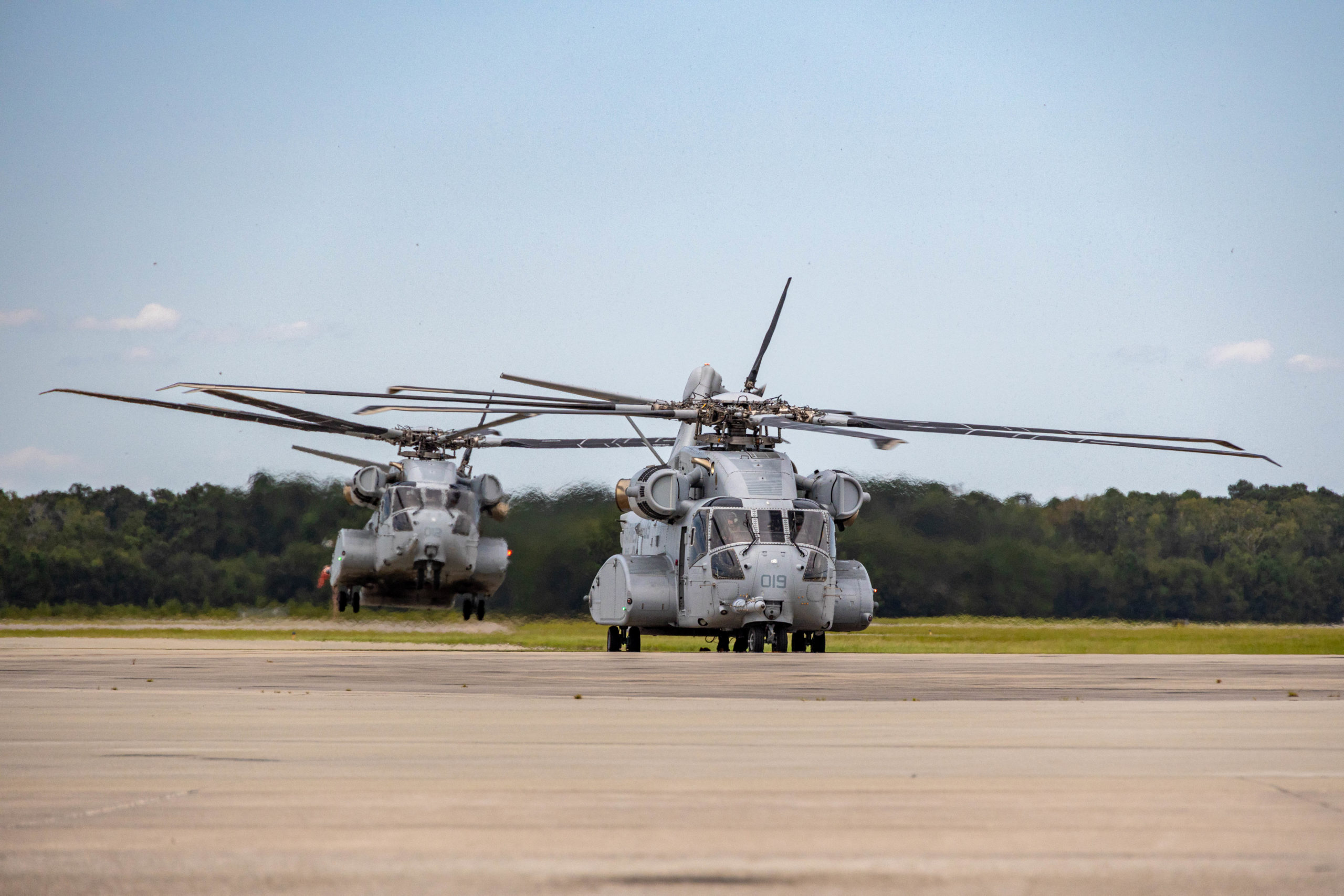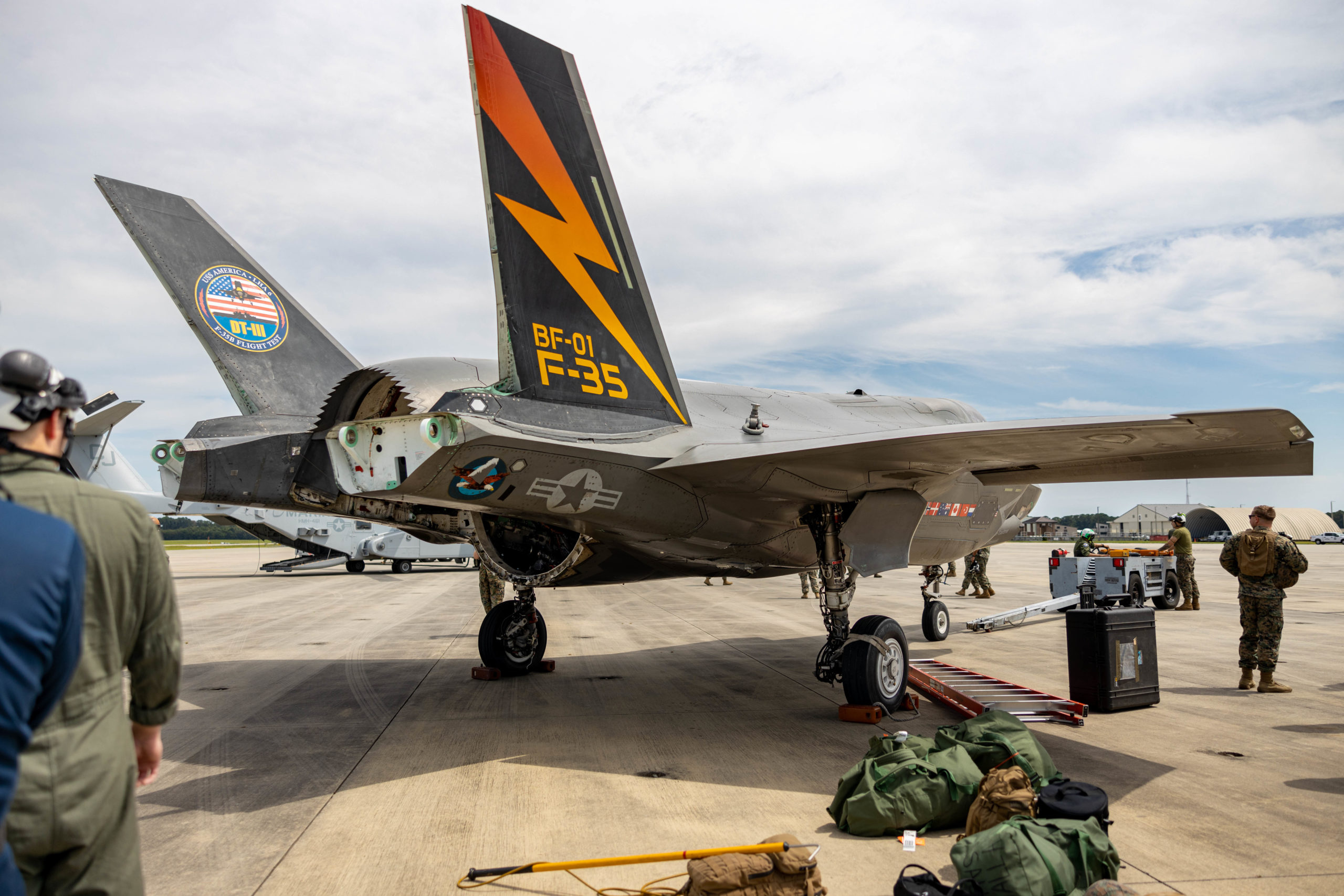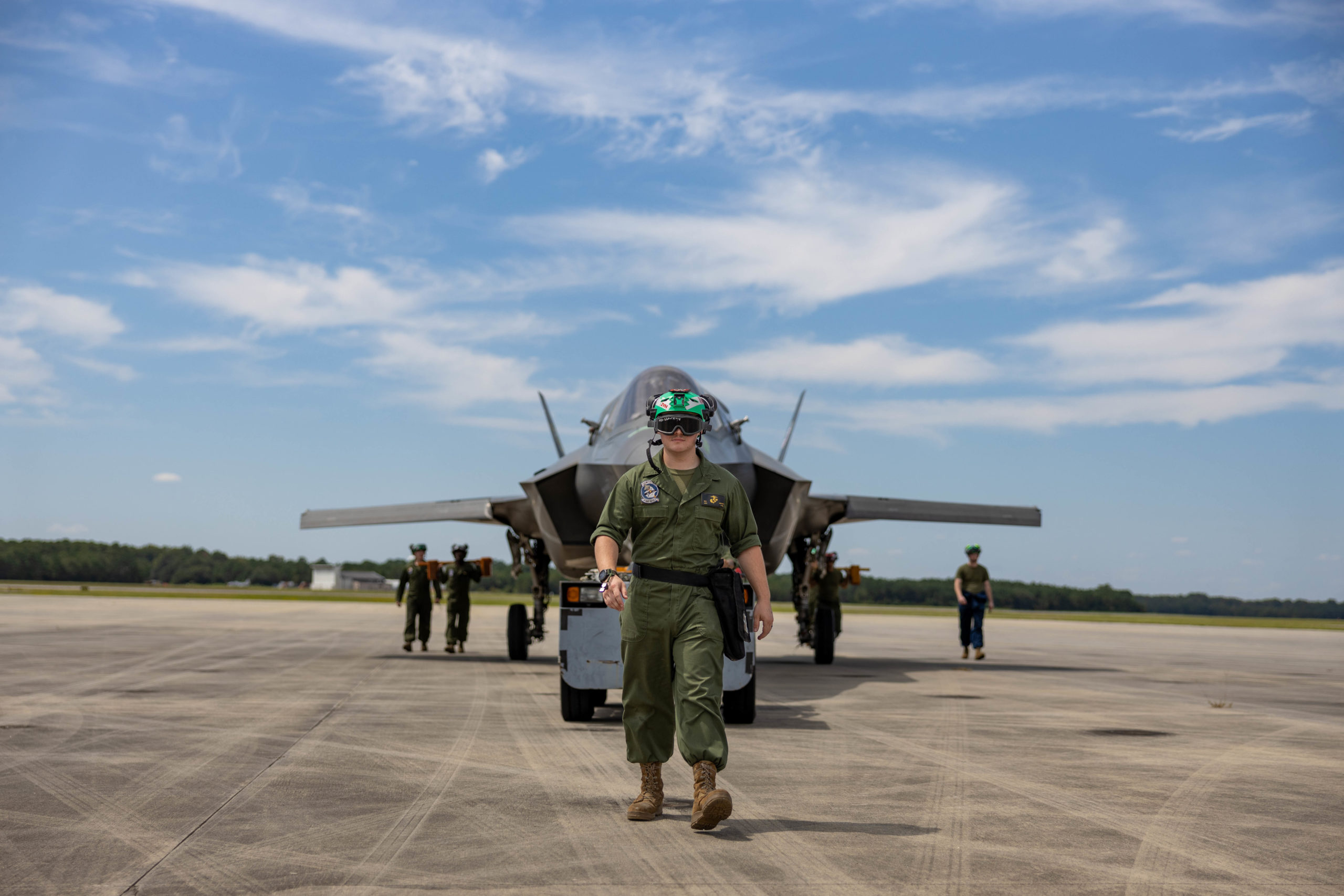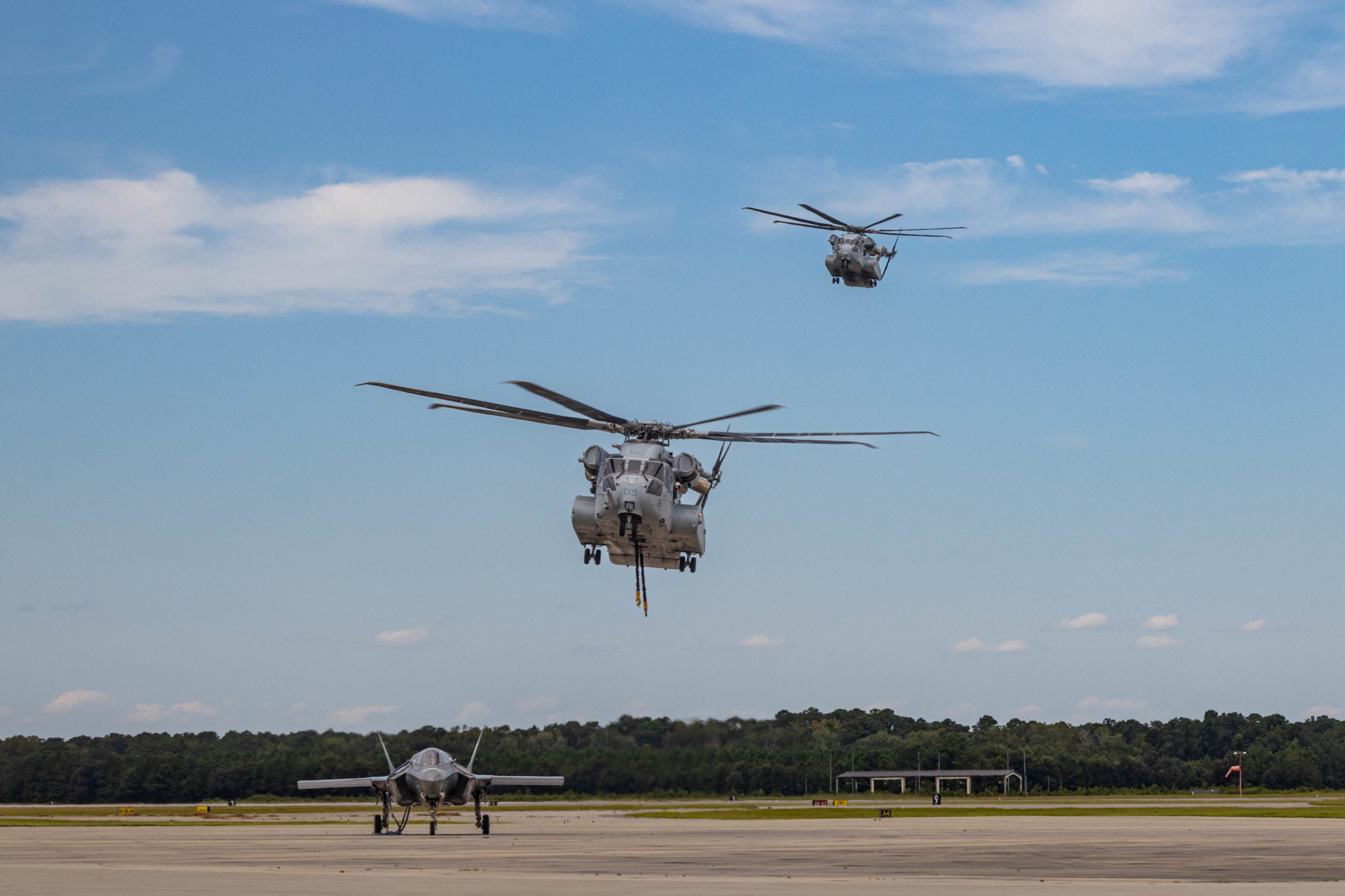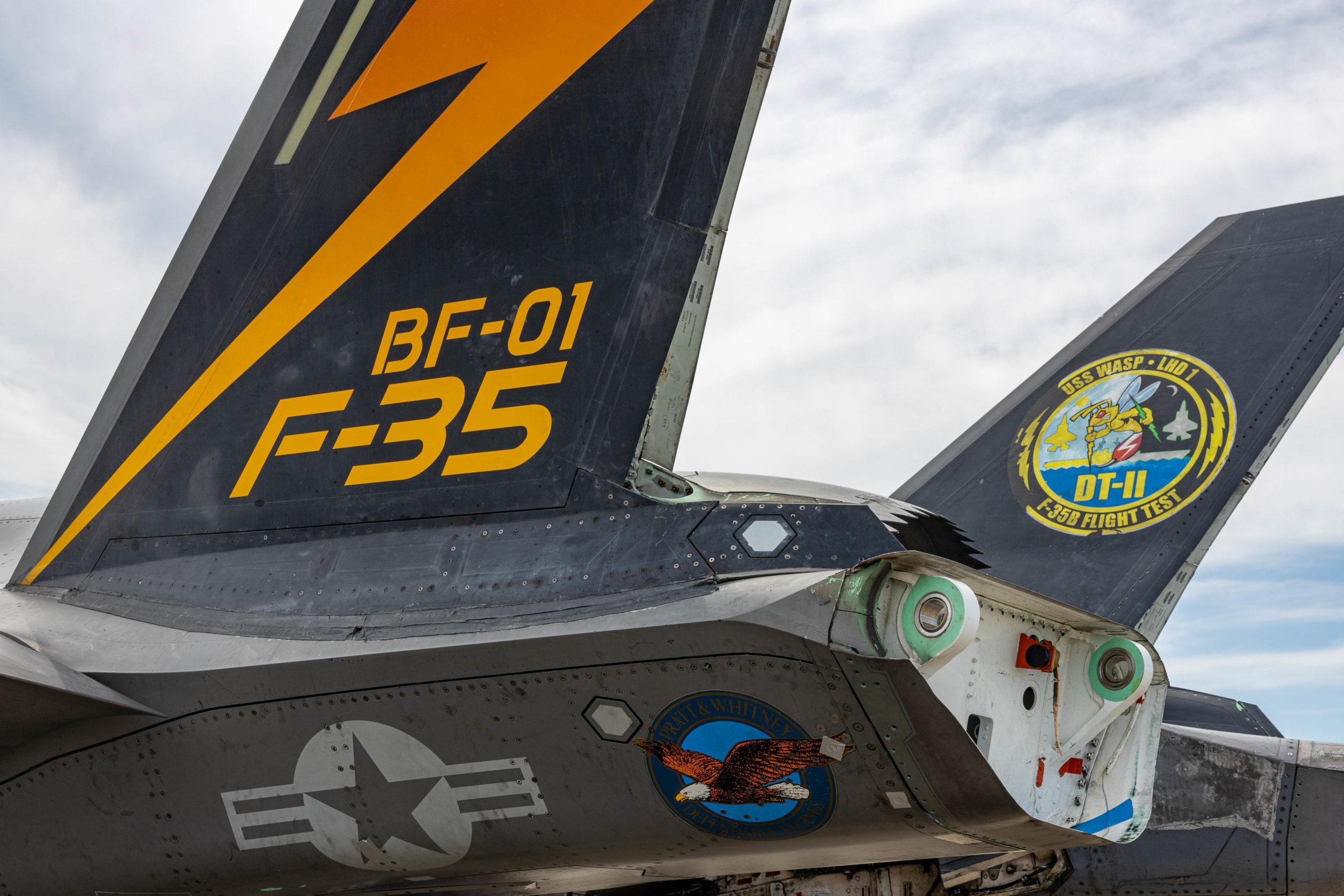By Robbin Laird
On September 26, 2025, the U.S. Department of Defense and Sikorsky, a Lockheed Martin company, signed one of the largest helicopter procurement contracts in military history. The five-year, multi-year procurement (MYP) agreement, valued at up to $10.855 billion, authorizes the production and delivery of up to 99 CH-53K King Stallion heavy-lift helicopters for the U.S. Marine Corps between 2029 and 2034. This landmark deal represents far more than a simple aircraft purchase for it embodies a strategic commitment to modernizing America’s expeditionary forces while strengthening the defense industrial base for the next decade.
The contract structure itself demonstrates sophisticated defense acquisition planning. Described by the Department of Defense as a fixed-price incentive (successful-target) and firm-fixed-price modification, the agreement definitizes production Lots 9 and 10 while adding scope for Lots 11 through 13. By combining five separate aircraft orders into a single multi-year procurement, the contract provides unprecedented stability for both the government and industry partners while delivering substantial cost savings to taxpayers.
The multi-year procurement approach offers significant financial advantages over traditional annual contracting methods. The agreement is projected to generate $1.5 billion in savings between 2025 and 2029, demonstrating the power of long-term contracting strategies in defense acquisition. Colonel Kate Fleeger, Program Manager for the H-53 Heavy Lift Helicopters Program Office (PMA-261), explained the mechanism behind these savings: “The contract allows Sikorsky to take advantage of a long-term, stable demand signal and bundle purchase orders from suppliers to achieve better pricing. That savings is then passed on to the government.”
This cost reduction strategy reflects broader defense acquisition reform efforts aimed at maximizing taxpayer value while ensuring military readiness. The multi-year structure enables Sikorsky to optimize its production planning, secure better pricing from suppliers through volume commitments, and reduce the administrative burden associated with annual contract negotiations. These efficiencies translate directly into lower unit costs for each helicopter while maintaining quality and delivery schedules.
The financial benefits extend beyond immediate cost savings. Long-term contracting provides predictable revenue streams that enable industry partners to invest in manufacturing improvements, workforce development, and technological advancement. This virtuous cycle of investment and efficiency gains benefits both the defense contractor and the government customer over the life of the program.
One of the most significant aspects of this contract is its impact on the defense industrial base. The CH-53K program involves an extensive network of suppliers, with 267 suppliers across 37 states and an additional 17 international suppliers from eight countries. This geographic distribution ensures that the economic benefits of the program reach communities across America while maintaining critical manufacturing capabilities in key industrial regions.
The multi-year structure provides unprecedented stability for this supplier network. Rather than facing uncertainty about future orders, suppliers can now plan investments, maintain skilled workforces, and optimize their own production processes based on predictable demand signals. This stability is particularly crucial for smaller suppliers who might otherwise struggle to maintain specialized capabilities during periods of uncertain demand.
Colonel Fleeger emphasized this benefit, stating that the contract provides “the ability to provide dependable delivery to the fleet and a consistent and predictable timeline for the transition from the CH-53E to the CH-53K.” This predictability enables the Marine Corps to plan its force modernization efforts with confidence while ensuring that aging CH-53E Super Stallions can be retired on schedule without capability gaps.
The contract also reinforces American manufacturing capabilities at a time of increasing global competition. By sustaining thousands of production roles at Sikorsky and across its nationwide supply chain, the agreement helps maintain the skilled workforce necessary for advanced aerospace manufacturing. These capabilities have applications beyond military helicopters, supporting broader American competitiveness in global aerospace markets.
The CH-53K King Stallion represents a revolutionary advancement in heavy-lift helicopter technology, far exceeding the capabilities of its predecessor, the CH-53E Super Stallion. The aircraft is designed to carry 27,000 pounds at a mission radius of 110 nautical miles under Navy high/hot conditions, nearly triple the capability of the CH-53E, with a maximum external lift capacity of 36,000 pounds. These specifications make the CH-53K the most powerful helicopter in the U.S. military inventory.
The aircraft’s advanced capabilities were dramatically demonstrated in 2022 when a CH-53K successfully landed an externally-loaded Light Armored Vehicle (LAV) at the summit of an 8,000-foot ridge in the Marine Corps’ 29 Palms training range in the California desert. This achievement highlighted the helicopter’s ability to operate in extreme conditions that would challenge or defeat other aircraft, providing Marine commanders with unprecedented operational flexibility.
Beyond raw lifting power, the CH-53K incorporates cutting-edge avionics and flight control systems. The aircraft features fully digital, fly-by-wire flight controls making it the first conventional helicopter in Marine Corps service to incorporate this technology. These advanced controls enhance safety, reduce pilot workload, and enable precision operations in challenging environments. The system allows the aircraft to maintain position within one foot of its intended hover point in all directions, critical for operations in confined or austere environments.
The helicopter’s digital backbone also enables advanced fleet management capabilities similar to those Sikorsky has implemented with its commercial S-92 helicopter fleet. This system allows for tracking individual aircraft components and predicting maintenance needs based on data-driven analysis rather than fixed schedules, crucial for maintaining high readiness rates in distributed operations.
The CH-53K procurement must be understood within the broader context of Marine Corps force modernization and evolving strategic requirements. As military operations increasingly focus on distributed operations across vast distances, particularly relevant in the Indo-Pacific region, the ability to rapidly transport heavy equipment and supplies becomes paramount. The CH-53K’s enhanced range and payload capabilities directly support the Marine Corps’ transition to distributed operations concepts.
Colonel Fleeger identified a critical challenge in maximizing the CH-53K’s potential: overcoming the perception that it is simply an upgraded CH-53E. “I think it actually encourages, unfortunately, people to view the platform as a replacement platform instead of a revolutionary, key element of a really forward-thinking concept of operations,” she explained. This perspective highlights the importance of integrating new capabilities into operational concepts rather than simply replacing older equipment with newer versions.
The aircraft’s capabilities enable entirely new operational approaches. Where the CH-53E required extensive preparation and carried significant risk when lifting 20,000-pound loads, the CH-53K handles such operations routinely, fundamentally changing how ground commanders can plan and execute missions. This capability transformation extends beyond simple logistics to enable new tactical and operational possibilities.
The CH-53K also supports the Marine Corps’ role as both a crisis response force and a key component of joint distributed operations. The aircraft’s ability to operate from both land and sea bases, including austere sites and amphibious shipping, provides essential flexibility for rapid response scenarios and sustained operations in contested environments.
The multi-year contract builds on significant program momentum. Sikorsky has already delivered 20 CH-53K aircraft to the Marine Corps, with an additional 63 aircraft from earlier production lots (Lots 4-8) currently in various stages of production and assembly. The Department of the Navy declared Full Rate Production for the CH-53K program in December 2022, marking the program’s transition from development to sustained production.
The Marine Corps has successfully transitioned one fleet squadron to the CH-53K, while additional aircraft are flying in developmental test, operational test, and training squadrons to support ongoing requirements and capability development. This phased approach allows the service to build operational experience while continuing to refine tactics, techniques, and procedures for the new aircraft.
The program of record remains at 200 CH-53K helicopters for the Marine Corps, suggesting potential for additional contracts beyond the current multi-year agreement. The current contract’s flexibility to support international military customers also opens possibilities for foreign military sales, which could further reduce unit costs through increased production volumes.
Israel has already committed to purchasing CH-53K helicopters, with recent contracts including eight aircraft bound for the Israeli Air Force through foreign military sales. The Israeli purchase validates the international appeal of the CH-53K’s capabilities and provides a model for potential future international partnerships.
The contract’s provision for international military customers represents a significant opportunity for both cost reduction and strategic partnership building. The agreement allows the U.S. Government to use the contract structure to fulfill orders from international military customers, potentially reducing unit costs for all participants through economies of scale.
Israel’s commitment to the CH-53K demonstrates the aircraft’s appeal to allied nations facing similar operational challenges. The Israeli Air Force plans to use the helicopters to replace their aging fleet of modified CH-53D Yasur helicopters, which have been in service for over 50 years. This replacement cycle highlights the long service life expected for modern military helicopters and the importance of investing in advanced capabilities that will remain relevant for decades.
The potential for additional international sales could significantly impact program economics. Foreign military sales typically contribute to lower unit costs for U.S. military customers while strengthening defense relationships with allied nations. The CH-53K’s advanced capabilities and the stability provided by the multi-year contract make it an attractive option for nations requiring heavy-lift capabilities.
The program’s transition to full-rate production also represents a significant risk reduction milestone. Development programs typically face their highest risks during the design and testing phases. By achieving full-rate production, the CH-53K program has demonstrated mature manufacturing processes and validated performance capabilities, reducing the likelihood of major program disruptions.
The $10.9 billion CH-53K multi-year procurement contract represents more than a helicopter purchase. It embodies a strategic investment in American defense capabilities, industrial base strength, and allied partnership opportunities. By providing cost savings, supply chain stability, and predictable production schedules, the contract benefits taxpayers, industry partners, and military end-users simultaneously.
The agreement ensures that the Marine Corps will receive the world’s most advanced heavy-lift helicopter on schedule while maintaining the industrial capabilities necessary for long-term sustainment and potential future developments. As global security challenges continue to evolve, particularly in the vast distances of the Indo-Pacific region, the CH-53K’s capabilities will prove invaluable for maintaining American military effectiveness and supporting allied operations.
The Coming of the CH-53K : A New Capability for the Distributed Force


